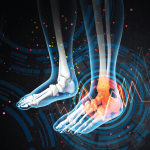I find few conditions as personally challenging to manage as Sjögren’s disease, which achieves the rheumatologic trifecta of a clinically driven diagnosis, heterogenous manifestations and no broadly approved treatments. Justification for the use of outside diagnostic testing—or worse, invasive minor salivary gland biopsy—for a skeptical patient being managed symptomatically requires a certain level of explanatory jujitsu that can be difficult to summon toward the end of a long day in clinic.
For this reason, this special supplement on advances and multidisciplinary management of Sjögren’s feels particularly timely, a much-needed road map after a long wander through the desert. After more than a decade of glimpses of promising treatments that disappeared on closer inspection, we now have a handful of increasingly evidence-based treatments and recalibrated tools for measuring success.
In this issue, Jason Liebowitz, MD, FACR, and Sarah McCoy, MD, PhD, outline the rationale for the movement toward reconceptualizing the syndrome as a single, though heterogenous, disease. Samantha Shapiro, MD, reviews diagnostic pitfalls in Sjögren’s with two specialists with sometimes differing, but complementary, approaches toward disease diagnosis and management across symptom domains; she also presents a pragmatic list of 10 hydrostomia interventions from Leslie P. Laing, PhD, DDS, useful for even our most prescription-averse patients. Daniel Brocks, MD, helps bridge the medical record divide between rheumatology and ophthalmology with a review of the topical treatments currently available and on the horizon. Ruth Jessen Hickman, MD, reviews how the ACR’s recent recommendations on managing interstitial lung disease in systemic autoimmune rheumatic diseases can apply to Sjögren’s-related lung disease, with an emphasis on early pulmonary function tests and high-resolution computed tomography scan. Michael Cammarata, MD, and Michael Polydefkis, MD, outline the formal diagnostic workup of neurologic manifestations, the limitations of available treatments and a pragmatic approach toward improving symptoms.
Management of Sjögren’s disease is crystallizing around tools with increased diagnostic resolution, with more targeted treatments and more effective means of measuring meaningful outcomes. For long-suffering patients and their physicians, the progress is refreshing.



